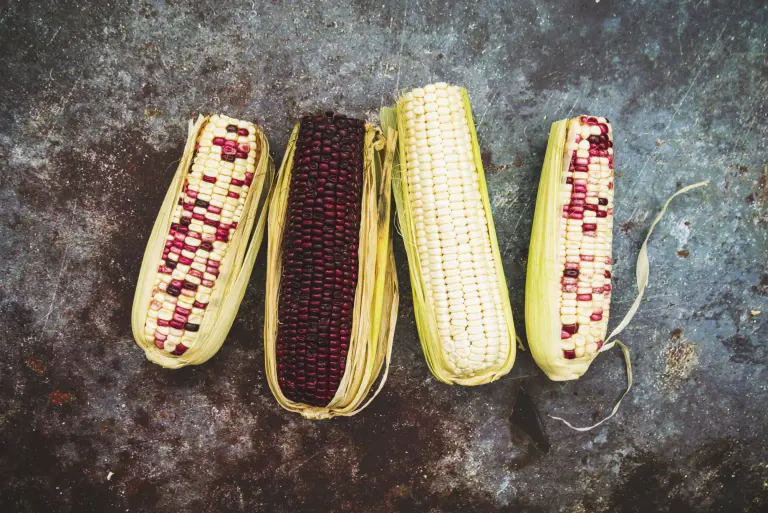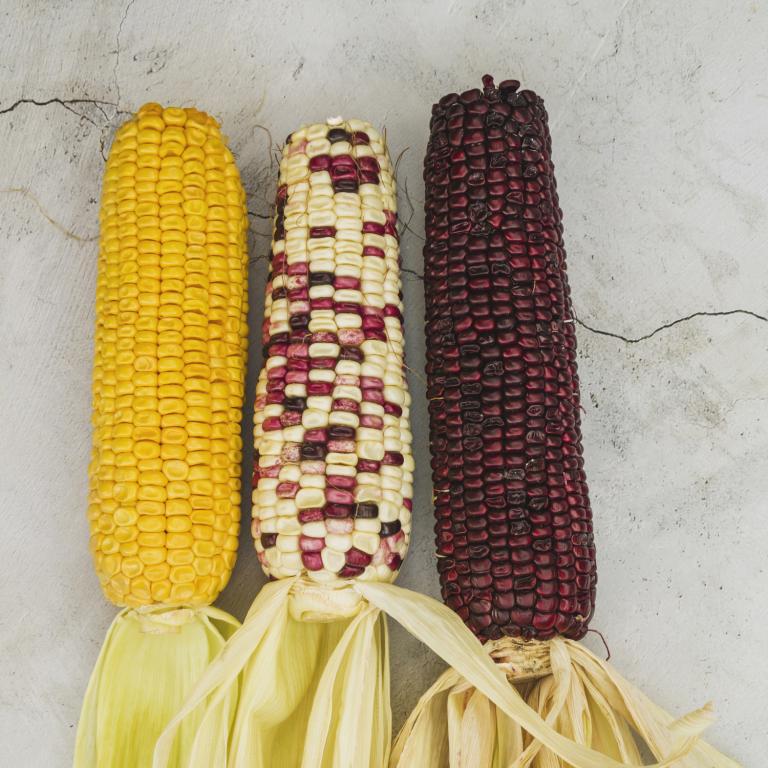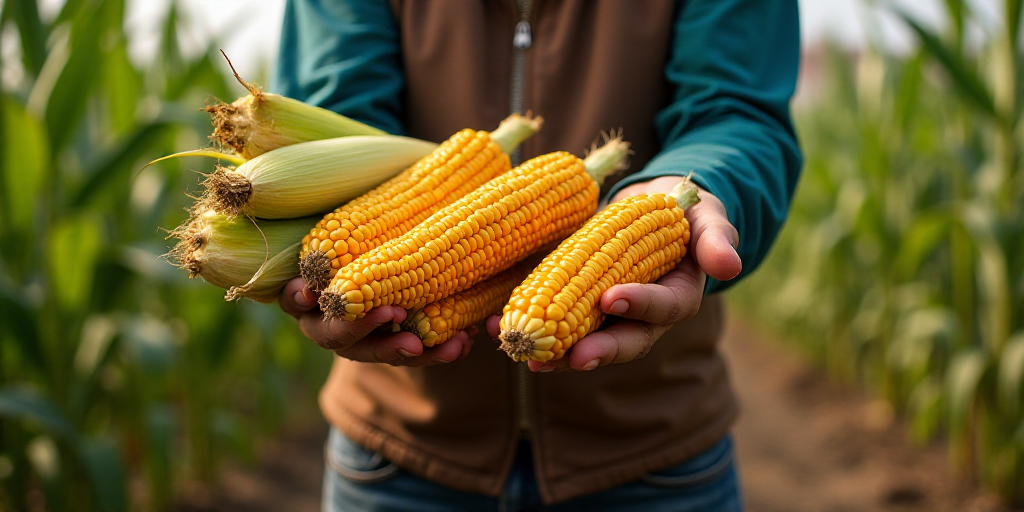Introduction
Every September 29th, Mexico celebrates the National Corn Day, commemorating corn as a grain of Mesoamerican origin and the cornerstone of its national cuisine. The rich genetic diversity, with 64 recognized races and 59 native to Mexico, continues to thrive in fields, temporary crops, and local markets where the colors of the cobs speak of origin and resilience.
Who is Corn to Mexico?
Mexico is synonymous with corn. Not only because it was domesticated more than nine millennia ago, but also due to the living genetic diversity that persists in its fields. This article explores Mexico’s relationship with corn, its significance to the national cuisine, and the ongoing efforts to protect its native breeds.

Maices nativos
Current Situation: Amidst Abundance and Threat
According to the Secretaría de Agricultura, Mexico harvests approximately 27 million tons of corn annually. However, in 2024, production dropped to 23.3 million tons, the lowest in over a decade due to severe drought and rising input costs. Despite these challenges, Mexico remains among the world’s leading producers while preserving one of the richest corn genetic reserves on the planet.

Maices nativos
Diversity: A Living Mosaic
Corn is not one but many. In the mountains of Oaxaca, the ‘bolita’ corn transforms into tlayudas; in the Bajío, ‘cacahuacintle’ corn brings pozole to life; in the Highlands, ‘chalqueño’ corn withstands intense cold; while in tropical lowlands, ‘Tuxpeño’ corn ensures harvests amidst unpredictable rains.
This diversity not only guarantees colors and flavors but also serves as a biological safeguard against climate change. Each native race carries centuries of adaptation to specific soils, altitudes, and climates.
The Cuisine That Honors It
Nixtamalization is the key. This ancient process turns corn into dough, releases its nutrients, and allows for the creation of tortillas, tamales, sopes, tlacoyos, and atoles. These daily dishes are also expressions of culinary sophistication.
In pozole, the cacahuacintle grains burst and foam; in tamales, the corn leaf wraps and infuses flavor; in blue tortillas, the natural pigment of the grain adds unique taste and texture. Corn’s versatility stems from its diverse races.
Chefs have understood this richness and brought it to the table with new narratives. Restaurants like Expendio de Maíz in Mexico City construct entire menus around the corn, while traditional cooks and chefs like Thalía Barrios in Oaxaca defend the criollo varieties of their communities, ensuring each dish has a specific origin.
National Corn Day serves as a reminder of what’s at stake: the continuity of native races, the dignification of those who cultivate them, and the right to a food source.
Key Questions and Answers
- What is the significance of corn in Mexico? Corn is fundamental to Mexico’s national cuisine, with over 60 native races contributing to its rich diversity and resilience.
- Why is corn production in Mexico declining? Corn production has dropped due to severe drought and rising input costs, impacting Mexico’s agricultural sector.
- How does corn diversity benefit Mexico? The various native races offer adaptability to different soils, altitudes, and climates, acting as a biological safeguard against climate change.
- How do Mexican chefs honor corn in their cuisine? Chefs showcase corn’s versatility by incorporating diverse races into innovative dishes, preserving traditional recipes, and promoting local varieties.
- What is the importance of National Corn Day? This day highlights the need to protect native corn races, respect those who cultivate them, and ensure access to this vital food source.






